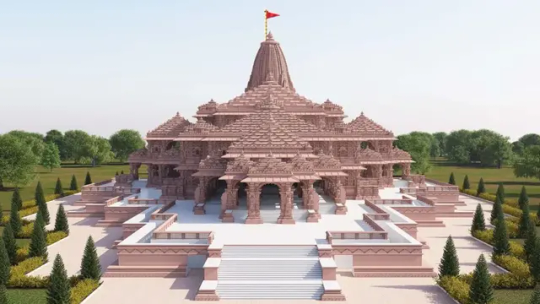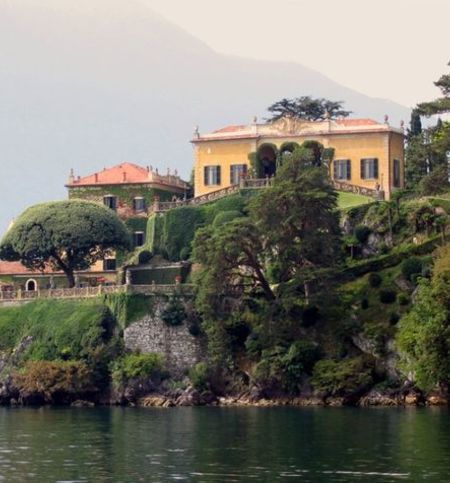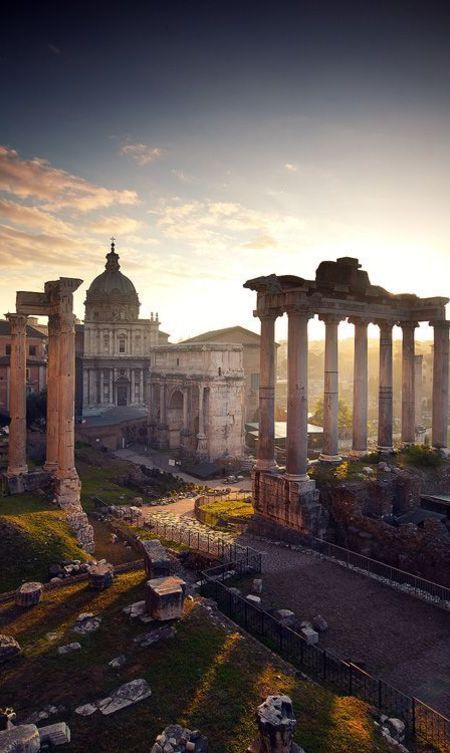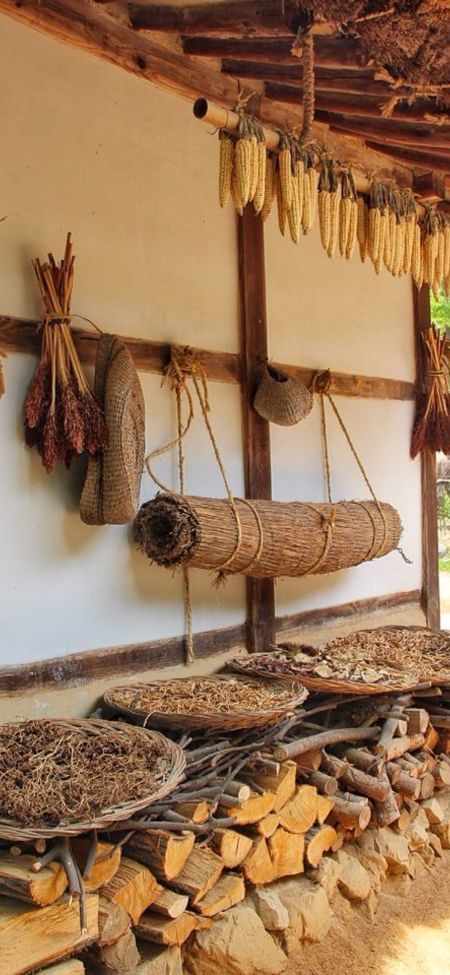#historicalsite
Text

#Xian#historicalsite#photography#travelblog#travelphotography#traveltheworld#travelingram#travelawesome#travelgram#china
4 notes
·
View notes
Photo

It’s magical to finally bear witness to the legendary and historical monument, Nidarosdomen 🇳🇴⛪️ Kinda thought it was bigger though! #trondheim #nidarosdomen #mayhem #mysteriisdomsathanas #tourisme #historicalsite #popefrancis #sightseeing #dde #rompami #e6 (ved Trondheim, Norway) https://www.instagram.com/p/CizklmFDy68/?igshid=NGJjMDIxMWI=
#trondheim#nidarosdomen#mayhem#mysteriisdomsathanas#tourisme#historicalsite#popefrancis#sightseeing#dde#rompami#e6
3 notes
·
View notes
Text
Taiwan: At The Chiang Kai-Shek Memorial Hall
Modern Taiwan was founded by the former president and revolutionary leader Chiang Kai-Shek, after Chinese civil war in 1949. It is only understandable that the people wanted to dedicate a special memorial place to him. So, the Chiang Kai-Shek Memorial Hall was build. This huge complex was build between 1976 and 1980.
People gathering to hundreds inside the gigantic hall to watch the hourly…

View On WordPress
#Asia#ceremony#cherryblossoms#guard#historicalsite#history#kaishek#kaishekmemorial#memorial#nature#park#people#photosession#portraits#renebauerphotography#reportage#sightseeing#taipei#taiwan#Travel
0 notes
Text
Statue Of Unity Ticket Prices 2024 – 2025

Discover the latest information on Statue of Unity ticket prices for 2024-2025 in our comprehensive guide. Plan your visit efficiently with insights into admission costs and make the most of your experience at this iconic landmark.
https://soloyatra.com/statue-of-unity-ticket-prices/
#StatueOfUnity#statueofunitytourism#statueofunity2024#traveldestination#tourism#travel#travelindia#gujarat#SardarPatel#unity#monument#sightseeing#Attractions#historicalsite#WorldsTallestStatue#touristdestination#visitindia#exploregujarat#traveltips#travelguide#vacationplanning#TravelDeals#exploreindia#incredibleindia#heritagesite#CulturalHeritage#UnityInDiversity#gujrattourism#SardarVallabhbhaiPatel#ahmedabad
0 notes
Text
Kilo Architectures . Volubilis visitor center, Morocco

Step into a world of wonder and immerse yourself in the rich history of Morocco at the awe-inspiring Volubilis visitor center. A tribute to Kilo Architectures' expertise, this masterpiece blends seamlessly with the breathtaking surroundings, offering an unforgettable experience.
0 notes
Text
Couvent de Pozzo- Corsica

Step into a fairytale at Couvent de Pozzo in Corsica - a whimsical hideaway that will steal your heart.
0 notes
Text
The Grand Design of the Ayodhya Ram Mandir 2024

The Grand Design of the Ayodhya Ram Mandir
The Ayodhya Ram Mandir, a monument of faith and cultural significance, is rapidly taking shape in the holy city of Ayodhya. The grand design of the temple, drawing inspiration from ancient Hindu architecture and scriptures, promises to be a breathtaking masterpiece upon completion.
A Legacy of Temple Building
The design of the Ram Mandir is entrusted to the renowned Sompura family of architects, whose lineage boasts over 15 generations of temple-building expertise. Chandrakant Sompura, the chief architect, along with his sons Nikhil and Ashish, meticulously crafted the plans, adhering to the principles of Vastu Shastra and Shilpa Shastra, the ancient Indian treatises on architecture and temple construction.
The Ayodhya Dispute: A Historical Labyrinth Unraveled
The Ayodhya Ram Mandir: A Fusion of Faith and Architectural Finesse
A Turning Point Etched in History: The Ayodhya Ram Mandir Foundation Laying Ceremony
The Rising Grandeur: Timeline and Progress of the Ayodhya Ram Mandir
The Ayodhya Ram Mandir: A Tapestry of Faith, Culture, and Identity
National and International Impact Ram Mandir in Ayodhya
The construction of the Ram Mandir is a complex and challenging taskWhat is the Ram Mandir and where is it located?
What is the religious significance of the Ram Mandir?
What were the historical events surrounding the Ram Janmabhoomi site?
What is the current status of the Ram Mandir construction?
What architectural style will the Ram Mandir follow?
What materials will be used in the construction?
What will the temple complex include?
When will the Ram Mandir be open to the public?
What are the rules and regulations for visiting the Ram Mandir?
Where can I stay if I want to visit the Ram Mandir?
Gurjara-Chaulukya Style: A Fusion of Grandeur and Grace
The Ram Mandir draws its architectural essence from the Gurjara-Chaulukya style, a sub-style of the Nagara tradition prevalent in northern India. This style is characterized by its intricate carvings, soaring shikharas (spires), and expansive mandapas (halls).
Dimensions of Majesty
The temple complex, sprawling over 108 acres, will be a sight to behold. The sanctum sanctorum, the innermost sanctum housing the idol of Lord Rama, will be situated within a tri-ratha (three chariots) plan, a symbolic representation of the Hindu trinity of Brahma, Vishnu, and Mahesh. The sanctum itself will be 30 feet square and rise to a height of 50 feet.
Soaring High: The Shikharas
The five majestic shikharas, the crowning glory of the temple, will pierce the sky, reaching a height of 161 feet. Each shikhara will be adorned with intricate carvings depicting celestial beings, mythical creatures, and floral motifs, creating a tapestry of divine stories.
A Symphony of Halls
The temple complex will house several mandapas, each serving a specific purpose. The Panchamandapa, located in the center, will be the largest hall, used for congregational prayers and ceremonies. The Nritya Mandapa will be dedicated to dance performances, while the Rang Mandapa will host theatrical presentations. The Kirtan Mandapa and Prarthana Mandapa will be used for devotional singing and prayer, respectively.
Beyond the Architecture
The design of the Ram Mandir goes beyond aesthetics. It embodies the essence of Hindu spirituality, incorporating symbolic elements that reflect the teachings and values of Hinduism. The use of natural materials like sandstone and teakwood, the intricate carvings narrating mythological tales, and the adherence to sacred architectural principles all contribute to the temple's spiritual significance.
A Beacon of Hope
The Ayodhya Ram Mandir is not just a temple; it is a symbol of hope, resilience, and the enduring power of faith. Its grand design, meticulously crafted and infused with spiritual meaning, promises to be a testament to India's rich architectural heritage and a source of inspiration for generations to come.
The construction of the Ram Mandir is currently in its final stages, and the temple is expected to be open to the public in 2024. When completed, it will be one of the largest and most magnificent Hindu temples in the world, a true masterpiece of architecture and a beacon of faith for millions of devotees.

The Grand Design of the Ayodhya Ram Mandir 2024
The Ayodhya Dispute: A Historical Labyrinth Unraveled
The Ayodhya dispute, a contentious web of faith, history, and politics, has been a defining chapter in India's recent past. The crux of the dispute lies in the ownership of a contested site in Ayodhya, Uttar Pradesh, where once stood the Babri Masjid and where devotees believe Lord Rama, a revered Hindu deity, was born. This article delves into the historical background of this complex issue, tracing its roots from the pre-colonial era to the landmark Supreme Court verdict of 2019.
Early Glimpses:
Early mentions of the disputed site date back to the 16th century, when Mughal emperor Babur commissioned the construction of the Babri Masjid. However, Hindu accounts claim a pre-existing temple dedicated to Lord Rama stood on the same spot, demolished by Babur to make way for the mosque. These claims, though unsubstantiated by concrete historical evidence, gained traction among Hindu communities over the centuries.
Colonial Tangles:
The Ayodhya issue simmered through the British Raj, occasionally erupting into sporadic clashes between Hindus and Muslims. In 1857, a railing was erected to separate the disputed site, reflecting the colonial administration's attempt to maintain a fragile peace.
Post-Independence Flashpoints:
Following India's independence in 1947, tensions surrounding the site escalated. In 1949, idols of Lord Rama mysteriously appeared inside the Babri Masjid, leading to the mosque's closure and triggering a series of legal battles. The decades that followed witnessed numerous court cases, political maneuverings, and escalating communal tensions.
The Ram Janmabhoomi Movement:
The 1980s saw the rise of the Ram Janmabhoomi movement, a Hindu nationalist campaign aimed at reclaiming the disputed site for the construction of a Ram temple. Led by prominent figures like VHP (Vishva Hindu Parishad) and BJP (Bharatiya Janata Party), the movement gained significant popular support, culminating in the fateful events of 1992.
Babri Masjid Demolition: A Turning Point:
On December 6, 1992, a large mob of Hindu kar sevaks (volunteers) demolished the Babri Masjid in a shocking display of religious fervor. The demolition triggered widespread communal riots across India, claiming over 2000 lives and deeply scarring the nation's social fabric.
Legal Labyrinth and the Supreme Court Verdict:
In the aftermath of the Babri Masjid demolition, the Ayodhya dispute remained entangled in a complex web of legal proceedings. After years of hearings and appeals, the Supreme Court of India delivered a landmark judgment in November 2019.
The court, in a split 5-0 decision, awarded the disputed land to a Hindu trust for the construction of a Ram Mandir. While the verdict brought closure to the legal aspects of the dispute, it left behind lasting social and political ramifications.
Beyond the Verdict: Reconciliation and Remembrance
The Ayodhya dispute remains a potent symbol of the delicate balance between religious identity and national unity in India. While the construction of the Ram Mandir is underway, the scars of the past continue to linger. Moving forward, efforts towards interfaith dialogue, historical understanding, and social healing are crucial to ensure that the Ayodhya dispute serves not as a divisive chapter, but as a catalyst for greater understanding and respect in India's diverse society.
Important Note:
It is important to acknowledge that the Ayodhya dispute is a complex and sensitive issue with diverse perspectives and interpretations. This article aims to provide a neutral and objective overview of the historical background, avoiding subjective or biased language.
The Ayodhya Ram Mandir: A Fusion of Faith and Architectural Finesse
The Ayodhya Ram Mandir, rising from the pages of India's vibrant history, promises to be not just a temple, but a testament to architectural brilliance and enduring devotion. Its design, drawing inspiration from the rich tapestry of Nagara style, is poised to become a landmark of faith and artistry.
Nagara Splendor:
The Ram Mandir embraces the essence of the Nagara style, prevalent in North Indian temple architecture. Characterized by its soaring shikharas (spires) and intricately carved mandapas (halls), this style embodies divine grandeur. The temple's three-story structure, adorned with exquisite carvings and sculptures, will rise majestically against the Ayodhya sky, a symphony of devotion in stone.
A Central Crown:
At the heart of the temple stands a majestic central dome, supported by a forest of intricately carved pillars. Each pillar, a canvas of artistic expression, will narrate stories from sacred texts and Hindu mythology. The dome, a symbol of celestial unity, will ascend towards the heavens, a beacon of faith visible from afar.
Echoes of the Past:
The design seamlessly integrates elements from the original temple believed to have stood at the site. This tribute to history not only underscores the continuity of faith but also acknowledges the legacy of the past. The incorporation of traditional motifs and architectural techniques ensures that the Ram Mandir carries within its walls the whisper of bygone eras.
Beyond Aesthetics:
The Ram Mandir's design transcends mere aesthetics. It embodies the principles of Vastu Shastra, the ancient Indian science of architecture, ensuring harmony between the temple and its environment. Every element, from the placement of the mandapas to the intricate carvings, holds deep symbolic meaning, connecting the physical realm to the spiritual.
A Beacon of Hope:
The Ayodhya Ram Mandir, a dream born from centuries of devotion, transcends the boundaries of religion to become a symbol of hope and resilience. Its intricate design, a testament to India's architectural heritage, promises to inspire generations to come. As the temple takes shape, it whispers tales of faith, history, and the indomitable spirit of the human heart.
Important Note:
This article explores the architectural design of the Ram Mandir while remaining neutral and objective. It recognizes the sensitivity of the subject matter and avoids subjective or biased language.
A Turning Point Etched in History: The Ayodhya Ram Mandir Foundation Laying Ceremony
August 5, 2020, etched itself onto the pages of Indian history as the day the foundation of the Ayodhya Ram Mandir was laid. The groundbreaking ceremony, a culmination of decades of legal battles and simmering tensions, resonated deeply within the Hindu community, marking a significant turning point in the Ayodhya dispute.
A Ceremony of Grandiose Significance:
The event was steeped in both religious fervor and political weight. Prime Minister Narendra Modi, along with prominent religious figures and dignitaries, participated in the sacred rituals, watched live by millions across the nation. The chanting of hymns, the fragrance of incense, and the vibrant hues of traditional attire filled the air, creating an atmosphere of transcendent emotion.
Beyond Groundbreaking: A Symbol of Closure and Hope:
For many Hindus, the ceremony signified more than just the beginning of construction. It represented the closure of a long and painful chapter, a period of uncertainty and communal discord. The laying of the foundation stone felt like a symbolic victory, a validation of their faith and perseverance.
A Bridge of Reconciliation:
However, the significance of the ceremony extended beyond the Hindu community. For some, it offered a flicker of hope for reconciliation and healing. The event served as a reminder of the importance of respecting diverse beliefs and finding common ground amidst differences.
Challenges and Responsibilities:
While the foundation laying marked a momentous occasion, it also ushered in new challenges. Constructing the Ram Mandir on such sensitive ground requires navigating delicate social and political dynamics. Ensuring inclusivity and fostering communal harmony remain crucial tasks in the journey ahead.
A Testament to Devotion and Resilience:
The Ayodhya Ram Mandir foundation laying ceremony stands as a testament to the enduring power of faith and the resilience of the human spirit. As the temple takes shape, it will not only be a religious edifice but also a symbol of hope, reconciliation, and the collective belief in a brighter future.
Important Note:
This article delves into the significance of the Ayodhya Ram Mandir foundation laying ceremony while maintaining a neutral and objective tone. It refrains from expressing personal opinions or advocating for specific viewpoints.
The Rising Grandeur: Timeline and Progress of the Ayodhya Ram Mandir
The Ayodhya Ram Mandir, a beacon of faith and architectural marvel, is rising steadily from the sacred soil of Ayodhya. Its construction, a culmination of decades of fervent devotion and historical complexities, is progressing in phases, with the vision of establishing it as a prominent religious and cultural landmark.
Phase 1: Laying the Foundation (August 5, 2020 – Ongoing)
The groundbreaking ceremony on August 5, 2020, marked the commencement of the first phase. Amidst chanting hymns and joyous celebrations, Prime Minister Narendra Modi laid the foundation stone. This pivotal moment signified the commencement of construction after a long wait.
Since then, the focus has been on building the plinth, a vital step for stability and earthquake resistance. This stage, involving the utilization of massive granite stones, is nearing completion.
Phase 2: Shaping the Shikharas (Estimated Completion: Early 2024)
With the plinth nearing completion, the second phase will witness the construction of the majestic shikharas (spires). These soaring structures, symbolic of divine connection, will be a defining feature of the temple. Each shikhara is planned to reach a height of 161 feet, adorned with intricate carvings and sculptures narrating mythological tales.
According to recent reports, the construction of the first shikhara commenced in September 2023, and progress is being made steadily. The completion of all five shikharas is estimated to be achieved by early 2024, marking a significant milestone in the construction process.
Phase 3: Carving the Intricacies (Estimated Completion: Late 2024 – Mid 2025)
The third phase will involve the intricate carving of the temple's exterior surfaces. Skilled artisans will meticulously craft beautiful patterns, symbolic motifs, and divine figures into the sandstone, breathing life into the architectural narratives. This delicate work is expected to take a considerable amount of time, with projections suggesting completion by late 2024 or mid-2025.
Phase 4: Consecration and Opening (Target Date: January 2024)
The final phase will culminate in the consecration of the temple and its opening to the public. While the intricate carvings might continue even after the official opening, the main structure, including the sanctum sanctorum housing the idol of Lord Rama, will be accessible to devotees. The target date for this momentous occasion is set for January 2024, although unforeseen circumstances could lead to slight adjustments.
A Promise of Hope and Beauty:
The Ayodhya Ram Mandir's construction timeline reflects the meticulous planning and dedication involved in bringing this vision to life. Each phase holds immense significance, not just in terms of architectural progress but also in terms of fulfilling the aspirations of millions of devotees. As the temple takes shape, it promises to be more than just a religious structure; it will be a testament to faith, resilience, and the enduring beauty of Indian heritage.
Important Note:
This article provides a neutral and objective overview of the timeline and progress of the Ayodhya Ram Mandir construction. It refrains from expressing personal opinions or advocating specific viewpoints.
The Ayodhya Ram Mandir: A Tapestry of Faith, Culture, and Identity
The Ayodhya Ram Mandir transcends the realm of brick and mortar; it stands as a potent symbol of faith, culture, and identity for Hindus across the globe. Its significance weaves a profound tapestry, where devotion intertwines with historical narratives and social aspirations.
A Cradle of Devotion:
For Hindus, Ayodhya holds immense religious significance. It is believed to be the birthplace of Lord Rama, a central figure in the epic Ramayana and a revered deity embodying righteousness, devotion, and ideal kingship. The construction of the Ram Mandir signifies the reclamation of a sacred site where Lord Rama was born, fulfilling a long-cherished desire for devotees.
Read the full article
#AyodhyaDevelopment#AyodhyaRamMandir#BIHAR#CulturalIdentity#DharmaSthal#DivineArchitecture#FaithInConstruction#Hinduism#HinduUnity#HistoricalSite#INDIA#IndianCulture#MANDIR#NagaraArchitecture#NationalPride#RAM#RamJanmabhoomi#ReligiousFreedom#ReligiousHeritage#SacredSpace#SHIV#SHREERAM#SpiritualJourney#SriRam#SymbolOfUnity#TempleConstruction
1 note
·
View note
Text
Santa Catalina Monastery - Arequipa, Peru

Step into a world of pure serenity at the exquisite Santa Catalina Monastery, an architectural masterpiece blooming with vibrant colors and exquisite flora.
0 notes
Photo

Korean Folk Village, Yongin, Gyeonggi Province, South Korea
Step back in time and experience the authentic charm of the Korean Folk Village in Yongin, Gyeonggi Province. An extraordinary cultural journey awaits as you explore the traditional architecture, folk performances, and vibrant local crafts.
0 notes
Text
The Hoover Dam Las Vegas.

Experience the ultimate power play at the Hoover Dam Las Vegas. This stunning feat of engineering will leave you in awe.
0 notes
Text
Kilo Architectures . Volubilis visitor center, Morocco

Discover the enchantment of Morocco at the breathtaking Volubilis visitor center, masterfully crafted by the talented Kilo Architectures. Lose yourself in the beauty of this architectural wonder adorned with flowing elegance and captivating design.
0 notes
Text
Gianni Versace's former Villa Fontanelle

Experience a piece of fashion history at Gianni Versace's former Villa Fontanelle. Imagine the creativity and glamour that flowed through these halls.
0 notes
Photo

The Forum, Rome
Discover the timeless beauty of The Forum in Rome, the captivating heart of ancient civilization.
1 note
·
View note
Text
Korean Folk Village, Yongin, Gyeonggi Province, South Korea

Discover the rich cultural heritage of South Korea at the enchanting Korean Folk Village in Yongin, Gyeonggi Province. Immerse yourself in the captivating traditions and customs of this historic destination.
0 notes
Photo

Kilo Architectures . Volubilis visitor center, Morocco
Discover the enchantment of Morocco at the breathtaking Volubilis visitor center, masterfully crafted by the talented Kilo Architectures. Lose yourself in the beauty of this architectural wonder adorned with flowing elegance and captivating design.
0 notes
Photo

Arundel Castle Gate to Dungeon
Delve into the depths of Arundel Castle's past as you pass through the grand gate, unlocking the secrets that lie within the ancient dungeon walls.
0 notes